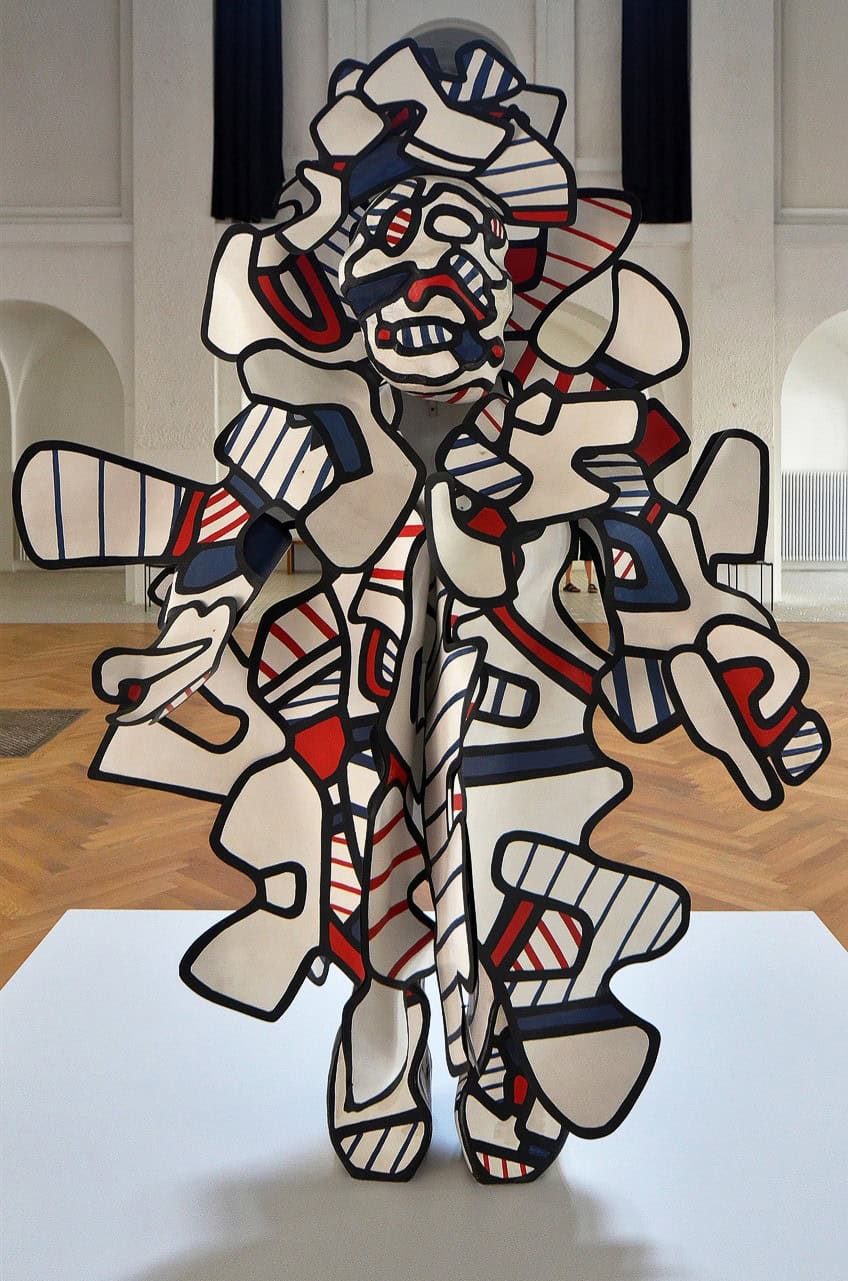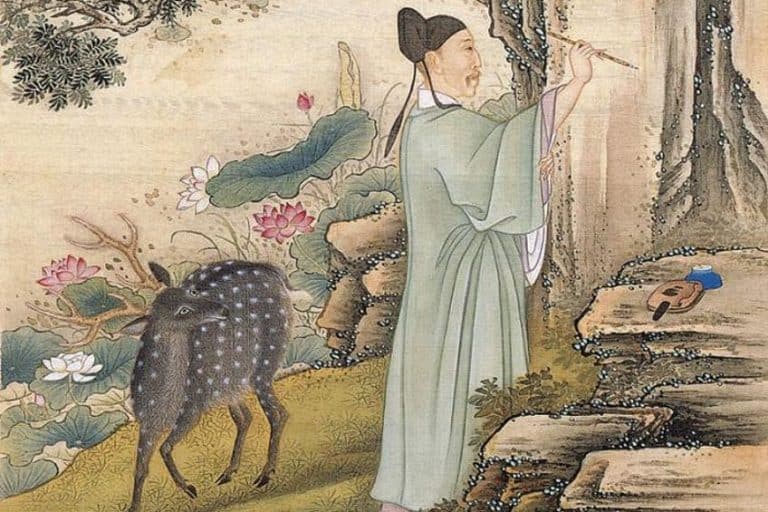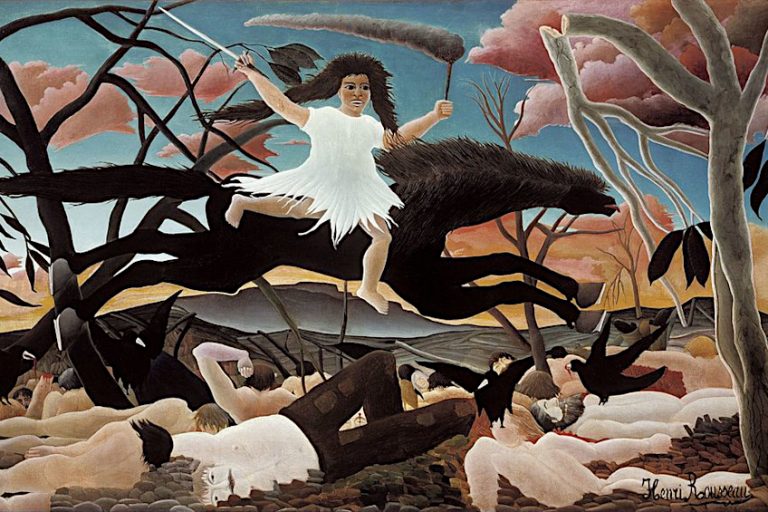Art Informel – The Role of Spontaneity and Intuition
Art Informel, emerging in the mid-20th century, represents a significant shift in the European art scene, emphasizing spontaneity, gestural techniques, and a rejection of traditional form and structure. Originating primarily in France during the post-World War II era, this movement was characterized by its abstract, expressive approach, which sought to convey raw emotion and personal expression over precise representation. Prominent artists associated with Art Informel, such as Jean Dubuffet, Hans Hartung, and Wols, employed unconventional materials and techniques, creating works that often appeared chaotic and organic. Art Informel’s emphasis on individuality and freedom of expression made it a crucial predecessor to later movements like Abstract Expressionism, leaving a lasting impact on the trajectory of modern art.
Key Takeaways
- Art Informel emerged in Europe after World War II, emphasizing spontaneity and gestural techniques.
- Key figures like Jean Dubuffet shaped the movement, which paralleled American Abstract Expressionism.
- The movement’s impact on contemporary art highlights its rejection of traditional artistic norms.
Historical Context
| Date Movement Started | 1945 |
|---|---|
| Date Movement Ended | 1950s |
| Prominent Members | Jean Dubuffet, Wols, Hans Hartung, Pierre Soulages, and Georges Mathieu |
| Style of Work | Abstract, expressive, and spontaneous, emphasizing the physical act of painting |
Art Informel, an innovative movement in abstract painting, emerged in Europe during the mid-20th century. This movement is characterized by its spontaneous and gestural approach to creating art, often emphasizing the process over the final product. Art Informel was a direct response to the traumas and atrocities of World War II, rejecting previous traditions of naturalistic and geometric art.
Key artists such as Jean Dubuffet played significant roles in shaping Art Informel, which drew influences from existentialism and a desire to break free from conventional norms.
This movement extended beyond France, paralleling American Abstract Expressionism, and had a profound impact on the development of contemporary art. Art Informel’s emphasis on improvisation and emotional expression opened new pathways for artists exploring abstract creative processes.

Exploring Art Informel provides insights into the transformation of European art in a post-war society. It showcases the depth and diversity of abstract painting styles that radically departed from earlier artistic traditions. By understanding the key features and techniques used by Art Informel artists, one can appreciate the movement’s enduring influence on contemporary art practices.
Post-World War II Art Scene
Following the devastations of World War II, the European art scene experienced significant shifts. Artists responded to the socio-political climate and collective trauma by rejecting established norms and experimenting with new forms of expression. This period saw a movement away from naturalistic and figurative art toward more abstract, spontaneous expressions.
The chaotic aftermath of the war provided fertile ground for a surge in experimentation, allowing artists to convey deeper emotional and psychological states through non-traditional means.
Emergence of Art Informel
Art Informel, also referred to as Informalism, and coined by critic Michel Tapié, originated in the 1940s and 1950s. This movement encapsulated various abstract and gestural styles of painting that emerged across Europe, contrasting sharply with the more formal American Abstract Expressionism.

Artists like Jean Fautrier exemplified the movement with works such as the Hostage Series (1943 – 1945). The term Un Art Autre by Tapié emphasized the break from conventional methods, focusing instead on anti-compositional and Surrealist-influenced practices that sought to capture the subconscious.
Key Ideas and Concepts
Art Informel is characterized by its embrace of spontaneity and irrationality. Artists employed gestural techniques and expressive forms to convey personal and collective traumas. These techniques often included dripping, smearing, and other spontaneous processes, mirroring the unpredictability and emotional turbulence of the post-war context.
A core concept within Art Informel was the rejection of traditional artistic conventions and a focus on the process of creation rather than the finished product.
This movement incorporated elements of Surrealist automatism, prioritizing a direct, unmediated expression of the psyche. The emphasis on intuition and spontaneity allowed artists to explore new artistic terrains and convey complex emotional landscapes.
Key Artists and Influences
Art Informel emerged in response to the trauma and disillusionment of World War II, leading to significant departures from traditional art forms. This movement encapsulated a variety of artistic practices characterized by spontaneity, irrationality, and gestural techniques.
Jean Dubuffet and Art Brut
Jean Dubuffet played a pivotal role in Art Informel, particularly through his concept of Art Brut. He sought to break free from conventional aesthetics by championing the raw, unrefined creativity of outsider artists. Dubuffet’s work often incorporated unconventional materials, emphasizing texture and surface. His pieces, such as Site Inhabited by Objects (1965), exemplify his dedication to this unpolished authenticity.
Dubuffet’s influence extended beyond his own art, shaping the movement’s embrace of spontaneity and the rejection of traditional artistic norms. His emphasis on raw creativity inspired many contemporaries and added a distinctive edge to Art Informel.
Tachisme and Its Leading Figures
Pierre Soulages, Hans Hartung, and Georges Mathieu were central figures in Tachisme, a branch of Art Informel that emphasized spontaneous brushwork and abstract forms. Soulages is known for his innovative use of black, creating dynamic, textured contrasts that explored the interplay of light and darkness. Hans Hartung’s work displayed vigorous, sweeping lines, while Georges Mathieu’s paintings often featured intense, rapid movements, almost resembling calligraphy. Mathieu’s Battle of Hastings (1956) is a prime example of his dramatic and energetic style.
These artists collectively pushed the boundaries of abstraction, emphasizing emotion and immediacy in their works.
International Impact and Diverse Approaches
Art Informel’s influence was not confined to Europe; it had a significant impact on international artists. Alberto Burri from Italy utilized unconventional materials like burlap and plastic to create textured, almost sculptural paintings. Jean-Paul Riopelle from Canada employed thick impasto and dynamic compositions, contributing to the movement’s gestural language.

In Spain, Antoni Tàpies blended abstraction with symbolic content, often using earthy textures. Meanwhile, Karel Appel and Asger Jorn from the Cobra group in Europe incorporated expressive, vibrant imagery, aligning with Art Informel’s ethos. Emilio Vedova’s chaotic yet controlled compositions reflected the turmoil of post-war sentiments, furthering the movement’s reach and diversity. Art Informel’s international scope and varied approaches underscore its significance in the evolution of modern art, influencing subsequent movements and continuing to inspire contemporary artists.
Artistic Features and Techniques
Art Informel arose as a radical approach to artistic expression, emphasizing non-representational forms, spontaneous gestures, and innovative materials. These distinct features set it apart from traditional art movements and techniques.
Abstraction and Formlessness
Art Informel artists embraced abstraction, moving away from representational art to create works without recognizable subjects. This formlessness allowed for greater freedom and creativity, enabling artists to focus on subjective experiences and emotions. They often rejected conventional composition, opting instead for dynamic and chaotic arrangements.
This approach emphasized the process over the final product, highlighting the importance of the artist’s expressive act.
Materials and Methods
Artists in the Art Informel movement frequently employed unconventional materials and methods. They experimented with dripping, splattering, and scraping paint onto the canvas, leading to innovative textural effects and a sense of raw, physical engagement with the medium.
These techniques often involved impasto, where paint is applied thickly to create a palpable texture. The use of non-traditional materials extended beyond paint, sometimes incorporating sand, plaster, or other substances to add depth and complexity to the artworks.
Spontaneity and the Role of the Artist
Spontaneity was a cornerstone of Art Informel, with artists valuing intuitive and impulsive creation over meticulous planning. The role of the artist became one of an intuitive creator, emphasizing personal expression and emotional immediacy. Gestural techniques, such as broad, sweeping brushstrokes, highlighted the physical act of painting. This approach underscored the subjective nature of art and the artist’s direct engagement with their work, breaking free from rigid artistic conventions.
These elements combined to define the unique and influential character of Art Informel, marking a significant departure from previous artistic traditions.
Legacy and Contemporary Relevance
Art Informel has left a significant mark on the art world, influencing numerous art movements and inspiring contemporary artists to explore new creative terrains. The following sections delve into its influence on later movements, the continued exploration by contemporary artists, and its lasting legacy today.
Influence on Later Movements
Art Informel significantly impacted various art movements, notably Cobra, Gutai, and Neo-Expressionism. Cobra, an avant-garde movement from Northern Europe, embraced spontaneity and emotional expression akin to Art Informel. Japanese Gutai artists adopted a dynamic and physical approach, reflecting the Informel’s emphasis on improvisation.
Neo-Expressionist painters clearly drew from Art Informel’s rejection of traditional composition, as seen in their raw, gestural techniques. Post-Minimalist sculptors and performance artists also found inspiration in the movement’s freedom and emphasis on process. These movements collectively embraced the anti-compositional and experimental ethos of Art Informel, pushing boundaries in their quest for authentic expression.
Continued Exploration by Contemporary Artists
Contemporary artists continue to explore the principles of Art Informel through experimentation and dynamic, spontaneous creation. American Abstract Expressionism and various Japanese artists echo the Informel’s techniques, integrating gestural methods and tactile textures.
This has allowed for a reinvigoration of abstract art, pushing contemporary boundaries.
Many artists today embrace the movement’s focus on the physicality of materials and the emotional resonance of art. They explore these through mixed media, installation, and digital art forms. The inclusion of improvisation in their practices demonstrates the enduring legacy and contemporary relevance of Art Informel’s foundational elements.
Legacy of Art Informel Today
Art Informel’s legacy thrives through its influence on contemporary artists and varied art forms. Its insistence on process over product continues to resonate in today’s art scene, fostering an environment where experimentation and personal expression are vital.

The movement’s emphasis on texture, gesture, and spontaneity has permeated into numerous contemporary art practices. From abstract art to performance-based works, Art Informel’s principles remain a cornerstone in understanding modern creative processes. This enduring influence underscores its critical role in shaping the landscape of contemporary art, ensuring its relevance for future generations.
Art Informel played a pivotal role in the evolution of modern art, offering a radical departure from conventional artistic norms and fostering a new era of abstract expression. By embracing spontaneity, emotional intensity, and innovative techniques, artists of this movement challenged the boundaries of artistic creation, paving the way for subsequent avant-garde movements. The legacy of Art Informel lies in its profound influence on the global art scene, inspiring future generations of artists to explore the depths of personal expression and the limitless possibilities of abstraction. As a testament to the resilience and adaptability of art, Art Informel continues to be celebrated for its bold experimentation and transformative impact on the art world.
Frequently Asked Questions
What Are the Defining Characteristics of Art Informel?
Art Informel is characterized by anti-compositional forms, gestural techniques, and spontaneity. It often rejects naturalistic and geometric styles for more intuitive, irrational approaches. Originating in response to World War II, it focuses on conveying emotion and immediacy, often through abstract and unconventional methods.
How Does Art Informel Differ from Abstract Expressionism?
While both movements emphasize spontaneity and emotional expression, Art Informel often has a more European origin and focuses on rejecting compositional norms. Abstract Expressionism, which is largely an American movement, tends to spotlight dynamics such as action painting and color field painting. Both movements share a rejection of traditional techniques but have distinct cultural contexts and stylistic priorities.
What Techniques Are Commonly Used in Art Informel?
Techniques in Art Informel include gestural application of paint, use of unconventional materials, and automatic drawing influenced by surrealist automatism. Artists may employ dripping, smearing, and scraping to create texture and depth, focusing on the process rather than the finished artwork. This approach allows for spontaneity and unplanned outcomes.
In What Ways Did Art Informel Pave the Way for Subsequent Art Movements?
Art Informel laid the groundwork for movements such as Abstract Expressionism and Action Painting by emphasizing emotional expression and spontaneity. Its focus on process over product inspired later artists to push boundaries and explore new methods of creation, paving the way for a broader acceptance of abstract and experimental art forms. The movement’s influence is seen in the liberties taken with material and technique in later 20th-century art.
Isabella studied at the University of Cape Town in South Africa and graduated with a Bachelor of Arts majoring in English Literature & Language and Psychology. Throughout her undergraduate years, she took Art History as an additional subject and absolutely loved it. Building on from her art history knowledge that began in high school, art has always been a particular area of fascination for her. From learning about artworks previously unknown to her, or sharpening her existing understanding of specific works, the ability to continue learning within this interesting sphere excites her greatly.
Her focal points of interest in art history encompass profiling specific artists and art movements, as it is these areas where she is able to really dig deep into the rich narrative of the art world. Additionally, she particularly enjoys exploring the different artistic styles of the 20th century, as well as the important impact that female artists have had on the development of art history.
Learn more about Isabella Meyer and the Art in Context Team.
Cite this Article
Isabella, Meyer, “Art Informel – The Role of Spontaneity and Intuition.” Art in Context. July 18, 2024. URL: https://artincontext.org/art-informel/
Meyer, I. (2024, 18 July). Art Informel – The Role of Spontaneity and Intuition. Art in Context. https://artincontext.org/art-informel/
Meyer, Isabella. “Art Informel – The Role of Spontaneity and Intuition.” Art in Context, July 18, 2024. https://artincontext.org/art-informel/.











